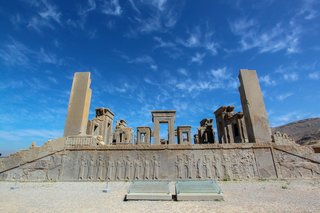Monday Meeting
CERES Palais, room "Ruhrpott" (4.13)

Picture: Mostafa Meraji / Unsplash
Guest Lecture by Hossein Najari (Shiraz University, Iran)
As Kövecses (2010) mentions, if metaphors are primarily conceptual, then they must manifest themselves in other than linguistic ways. That is, if the conceptual system that governs how we experience the world, how we think, and how we act is partly metaphorical, then the (conceptual) metaphors must be realized not only in language but also in many other areas of human experience. Some metaphors are grounded in correlations in our experience and in some others there is a perceived structural similarity (resemblance). It is worth nothing that many conceptual metaphors derive from conceptual metonymies and have a metonymic basis or motivation.
One of the mostly non-verbal manifestations of metaphor is in architecture. In the architectural discourse, the 'metaphor' is a 'carrying over' from one idea to another, a transgression, a metamorphosis of categories, and it goes to the heart of architecture's secrets. It is the transformation process from abstracts into material or visual image. Forceville (2008) believes that Pictorial (or visual) metaphor is the most examined nonverbal mode of metaphor. They are monomodal: their target and source are entirely rendered in visual terms.
The application of Conceptual Metaphor Theory (CMT) and determination of some visual /pictorial metaphors, and also extraction of some metonymical conceptualizations in Persepolis, capital of Achaemenid Empire (550-330 B.C.), is the aim of this lecture, where we will put a mirror in front of the nature and the way of thinking in ancient Iran and get acquainted with the conceptualization processes that work even today and also their aspects of universality.
The lecture will also be available via Zoom. To participate, please pre-register until 9 December 2022 at: https://eveeno.com/gl-sfb1475-12-12-2022
https://ceres.rub.de/en/events/guest-lecture-sfb-1475-12122022/


